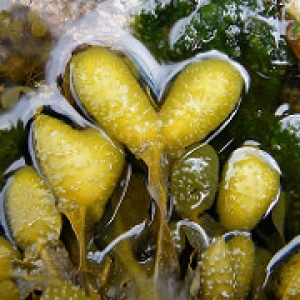
The World Bank has released a short working paper arguing that the expansion of seaweed farming in tropical developing countries could have large positive impacts on local poverty, ecosystem management and climate change mitigation. The report goes through different benefits and uses of seaweed production and briefly discusses current and potential markets for the crop.
Seaweed is a protein-rich form of vegetation with the dry-matter composition of seaweeds ranging from 10–30% protein and, on average, 3% lipid. In terms of food quality, algae protein can be thought of as roughly similar in value to soy protein. Algae oils can also contain long chain omega-3 fatty acids, which make them comparable to fish oils in nutritional value. Humans can consume seaweeds directly, as can animals. Seaweeds and seaweed extracts have been used to feed poultry, sheep, cattle, pigs, abalone and shrimp.
Seaweed can also be used to clean water polluted by nitrogen. In 2014, an estimated 19 to 37 million tons of nitrogen ended up in coastal waters. This pollution has contributed to 245,000 square kilometers of dead zones globally, many of which could be cleaned through seaweed production at the same as producing at least 1,000 tons dry weight of marine plants per square kilometer. Additional benefits mentioned in the report were phosphorus fertilizer production, carbon sequestration and biofuel production.
Of the total global production, 99.4% of seaweed products were farmed in Asian coastal waters. Farming can be done directly on the high seas or in areas nearer to shore; in either case, some (natural) source of nutrients is essential. Nutrients such as nitrogen and phosphorus are found in some parts of the high seas, but are generally more plentiful near the coast. The World Bank report states that the growth of seaweed farming is currently limited primarily by lack of the necessary marine spatial plans and by financing.
You can download the full paper here.
If you are interested in seaweed aquaculture, have a look at John Forster’s blog (2010) on marine algae and aquaculture on our website here.







Post a new comment »